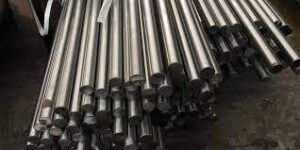Introduction
In the world of metallurgy and manufacturing, few materials are as vital and versatile as hot work tool steel. It’s the unsung hero behind the scenes, enduring extreme temperatures and mechanical stress to shape the products we use every day. One of its most pivotal roles is in the art of forging. In this comprehensive guide, we’ll delve deep into the intricate science of hot work tool steel and why it’s a crucial material for forging, exploring its applications, characteristics, and its indomitable role in shaping metals.
Forging the Foundations: An Overview<a name=”forging-the-foundations”
Forging is a manufacturing process that has been around for centuries, dating back to the ancient civilizations. It involves the shaping of metals through the application of compressive forces. One of the key elements that make forging possible is the use of hot work tool steel.
Understanding Hot Work Tool Steel<a name=”understanding-hot-work-tool-steel”
Hot work tool steel is a high-alloy steel known for its exceptional heat resistance and toughness. It’s engineered to withstand extreme temperatures and mechanical stress, making it a preferred material for processes involving hot forging.
Hot Work Tool Steel: The Metallurgical Marvel<a name=”metallurgical-marvel”
Hot work tool steel’s metallurgical composition is a marvel. It typically includes alloying elements like chromium, tungsten, molybdenum, and vanadium, which contribute to its unique set of properties, including heat resistance and wear resistance.
Forging Ahead: The Art of Shaping Metals<a name=”forging-ahead”
Forging is a precise craft that involves heating metal to its plasticity range and then deforming it using various tools and dies. This process requires materials that can withstand high temperatures and maintain their mechanical properties, which is where hot work tool steel shines.
The Role of Heat Resistance<a name=”role-of-heat-resistance”
Heat resistance is a critical property in forging because the metal being shaped is often at a high temperature. Hot work tool steel can endure temperatures well above 1000°C (1832°F) without losing its structural integrity, making it an ideal choice for this application.
Hot Work Tool Steel in Forging: A Perfect Match<a name=”perfect-match”
Hot work tool steel is the perfect match for forging due to several key attributes:
- High Heat Resistance: It can withstand the extreme temperatures generated during the forging process without deforming or losing hardness.
- Toughness: Hot work tool steel’s toughness ensures that the dies and tools used in forging can withstand the intense mechanical stress without breaking.
- Wear Resistance: The wear-resistant nature of hot work tool steel ensures that the tools and dies have a longer lifespan, reducing maintenance costs.
Forging Beyond the Ordinary<a name=”forging-beyond-the-ordinary”
Forging isn’t limited to basic shapes. With hot work tool steel, complex and intricate components can be forged with precision. This versatility is crucial in industries such as automotive, aerospace, and construction, where components require intricate designs and strict tolerances.
Challenges in Forging<a name=”challenges-in-forging”
Forging poses significant challenges, including high temperatures, mechanical stress, and the need for precision. Hot work tool steel’s heat resistance and toughness make it the ideal material to overcome these challenges.
Hot Work Tool Steel Grades for Forging<a name=”grades-for-forging”
Various grades of hot work tool steel are available, each with its unique combination of properties. Commonly used grades in forging include H13, H11, and H21, with each grade tailored to meet specific requirements based on the type of forging and the operating conditions.
FAQ<a name=”faq”
1. Can hot work tool steel be used for cold forging?
While hot work tool steel is primarily designed for high-temperature applications, it can be used for cold forging in some cases, but it may not perform optimally in those conditions.
2. What are some common challenges in forging that hot work tool steel helps address?
Hot work tool steel helps address challenges such as maintaining dimensional accuracy, withstanding high temperatures, and ensuring the longevity of tools and dies.
3. Are there any safety precautions when working with hot work tool steel in forging?
Safety is paramount when forging with hot work tool steel. Adequate protective gear, including heat-resistant clothing and eye protection, should be worn. Workers should also receive proper training in safe handling practices to minimize risks.
4. Can hot work tool steel be re-used in forging after being subjected to high temperatures?
While hot work tool steel can withstand high temperatures, it may undergo wear and tear over time. Reusing it depends on the extent of wear and the specific forging application.
5. Are there alternative materials to hot work tool steel for forging?
While there are other materials available for forging, hot work tool steel remains a preferred choice due to its excellent combination of heat resistance, toughness, and wear resistance.
Conclusion<a name=”conclusion”
Hot work tool steel is the unsung hero of forging, silently enduring the scorching temperatures and mechanical forces required to shape metals. Its heat resistance, toughness, and wear resistance make it a crucial material in industries that rely on precision and durability. Understanding the role of hot work tool steel in forging is essential for achieving optimal results and ensuring the longevity of tools and dies. In the world of manufacturing, where precision and strength are paramount, hot work tool steel stands as an unwavering force, shaping the future one forged component at a time.

